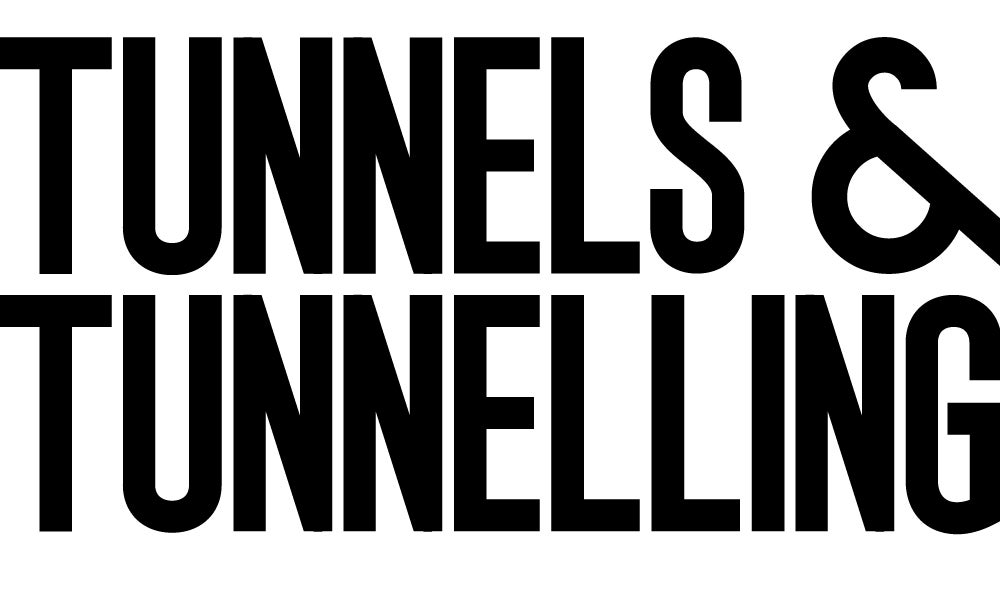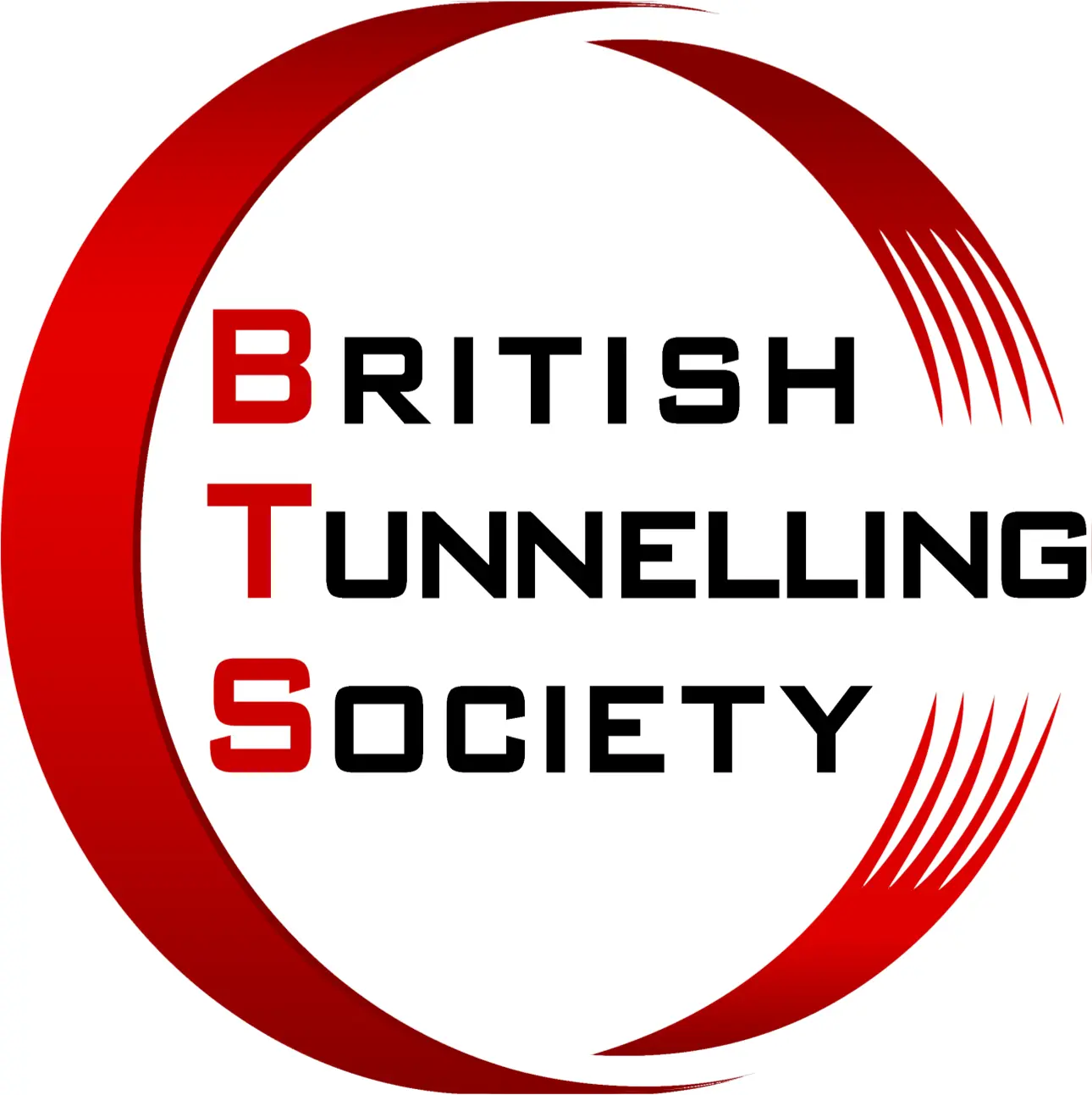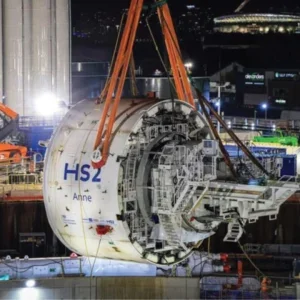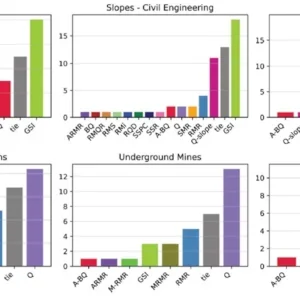Shanxi Porvince in the People’s Republic of China is characterised by severe winter temperatures and chronic drought. The Wanjiazhai Yellow River diversion project in the northern region is seen as the answer.
The project is divided into five lots. Through international competitive bidding, lots 2 and 3 were awarded to a Sino-Italian joint venture, Wan Long Joint Venture on 17 August 1997. Members of the JV are two Italian companies (Impregilo, 48% – as sponsor, and CMC, 42%) and local partner The China Water Conservancy and Hydropower Engineering Bureau No 4 (10%).
Financed by the World Bank, the project client is the Shanxi Wanjiazhai Yellow River Diversion Project Corporation (YRDPC). The designer is the Tianjin Investigation Design and Research Institute (TIDI), and both contracts are governed by FIDIC conditions. The notice to proceed was issued on 1 September 1997.
The works
Lots 2 and 3 consist of four tunnels to be excavated and lined by TBMs. Total length is 88,900m, of which 1573.5m are to be conventionally excavated using NATM and lined segmentally using the TBMs. Depth varies between 50m and 300m.
Because of the length of the tunnels and the short construction time available (48 months), a high speed segmental lining system was designed. A ring of four elements in a honeycomb configuration are placed, staggered in a longitudinal direction so that two opposite elements are always in an equal position. This allows for continuous installation of the segments during the drive.
In both lots, this honeycombed segmental lining system was, for the first time ever, supplemented by gaskets which are glued onto the joints before assembly in the tunnel. Under the pressure exerted by the TBMs’ auxiliary rams, the gaskets are compressed in the direction of the tunnel. No bolts were used on the circumference.
Double shield TBMs with gripper support were designed for continuous boring for installing the lining.
However, the demand for water-tightness, and the innovative design of the lining did not give a totally satisfactory result, despite the high level of precision in the production and placement of the segments.
To fill the annular gap between the rock cavity and the installed segments, pea gravel is injected immediately after each ring is completed and then liquid grout is pumped in two phases. First, grout is injected into the invert 15m behind the TBM. More grout is then injected in the sides and crown of the holes. The operations are performed by the TBM back-up.
Lot 2
Lot 2 comprises (see Fig 1):
– tunnel T4 with a total length of 6,636m to be excavated and lined by TBM
– tunnel T5, continuing tunnel T4 and with a total length of 25,536m to be excavated and lined by TBM (excluding 244m at the outlet portal but including segment lining)
– adit no 5 of 20, excavated using NATM
– tunnel T6, with a total length of 13 978m to be excavated and lined by a TBM, and 410m (inlet and outlet) excavated using NATM;
– one aqueduct of 370m;
– two embedded culverts, one of 622m.
The total length of the tunnels to be excavated and lined by two double-shielded TBMs is 47,659 m (240m to be lined conventionally). The TBMs bore simultaneously.
The excavation diameters of tunnels T4 and T5 are 4.92m, and that of T6 is 4.82m. The thickness of each segment is 220mm and its length 1.4m. The final internal diameter of tunnel T4 and T5 is 4.30m, and that of T6 is 4.20m.
Geology within the Lot 2 zone is characterised by dipping Cambrian and Ordovician limestone and dolomite rock. The rock formation is dominated by small flexures and occasional faults or groups of faults.
Karst formations are abundant in the Ordovician strata and are often infilled with plastic clay which, particularly in tunnel T6, have slowed the TBM’s daily progress (see Table 1).
Excavation and lining of T4 started in February 1999 and was completed on 14 October. Boring on T5 started on 25 November 1999 and is now 39% complete, with T6 some 63% complete after a 30 December start. Its records for TBM advance on T4 and T5 mark 28 February 2000 as the maximum daily advance of 99.37m, and January 2000 for a maximum monthly production record of 1821.51m. On T6 the maximum daily advance was notched up on 21 February – 81.03m, and the maximum monthly production record of 1,375m coming in February 2000.
Lot 3
Lot 3 is mainly tunnel T7 (Fig 1) – a length of 40 650m to be excavated and lined at the same time. Two TBMs will start from the two opposite ends – north and south – and meet either at adit 17 or 14 depending on the progress of each.
The excavation diameter is 4.88m, but after lining is 4.20m. Four adits (11, 14, 17 and 20) form the permanent maintenance access tunnels. The JV is also responsible for the adits’ design and conventional excavation by NATM.
Lot 3 geology along the T7 tunnel line consists of dipping and folded Palaeozoic dolomitic limestone and Triassic sandstone and mudstone.
The rock structure is dominated by abundant high-angled faults which are intersected along the drive. Occasionally-encountered Karst cavities are generally empty.
Progress at 26 March (see table 1) put northbound boring, which started on 10 February 1999, at 36% complete, and southbound boring started on 3 December at 53% complete.
Maximum daily advance on the northbound drive was 71.1m, on 11October; and the maximum monthly advance was 1281m, in November 1999; T7 south set a 70.1m record for maximum daily advance on 6 September 1999 and a maximum monthly advance record of 1,154m in November 1999.
The overall maximum monthly production of the two lots was made in January 2000 with a record of 4,871m excavated and lined.
TBMs and main equipment
Four TBMs are at work. All four are hard rock, double-shield with a maximum stroke of 1,400mm. However, as a safety measure against the unstable behaviour of the geological conditions, only half of this is normally in use.
TBM A in tunnel T4 was manufactured by Robbins specifically for the project. It has a 4.92m diameter and total cutter head power of 3000kW from five 315kW motors. The electric-drive TBM is equipped with continuously variable rotational speed by frequency variation.
T6’s TBM B was bought ‘as-new’ with complete refurbishment by Robbins. It has a diameter of 4.82m and the cutter head is driven by six 75/210-kW motors giving a total installed power is 3,000kW.
Robbins also supplied TBM C for T7 North. Technical specifications are similar to TBM A but the excavation diameter is 4.88m.
TBM D for T7 South came from NFM. Its diameter is 4.88m, and the total cutterhead power is 1,500kW from six 250kW motors.
The back-up system is the same for all the four TBMs, and is a totally new design developed by the Impregilo technical department. The length of each back-up system is 300m. Each mucking-out train has sufficient capacity for 2.8m of advance (four ram advance actions).
To keep up with the fast advance rate of four TBMs boring simultaneously, a large precast concrete segment plant with four production lines was assembled. It operates 24h per day, six days per week with production output of 118 precast segments per line per day. Each line allows for a minimum of 35m of tunnel to be lined daily. The production lines are of the carousel type where the 32 steel forms trailer-mounted and slide on rails.
The production cycle consists of setting up, placing reinforced cages; concrete casting; steam curling; and dismantling and cleaning the steel forms. After steam curing at 70°C for three hours, the segments are left in the indoor curing area for about two days. Production is managed by a programmable logic controller and is operated and monitored from a control board. All moulds are moved simultaneously along the 10 stations of each production line.
The precast plant also houses two reinforcement bar workshop lines, operating 24h a day, six days a week making the segment steel reinforcement cages.
The honeycombed lining system requires a high degree of precision, and the strict dimensional tolerances are governed by the technical specifications. The specified 1mm offset for the width and length of the lining section, and two-tenths on the contour of the perimeter joints, require constant monitoring of the dimensions of the mould templates.
The steel moulds were designed by CIFA in collaboration with the Impregilo technical department but were manufactured locally under the supervision of CIFA, which also supplied special parts of the moulds directly from Italy.
Highest daily production for the segments was on 17 March this year with 653 segments.
At the end of March, the workforce employed in the construction of the two lots topped 1,580, comprising 80 foreign workers, mostly Italian, 100 Chinese staff and a local labour force of 1,400.
Elsewhere in China
The Wanjiazhai Yellow River diversion project, lots 2 and 3 is the third project sponsored by Impregilo in China.
The two previous projects are the now-completed Ertan hydroelectric project and the Xiaolangdi multi-purpose rockfill dam on the Yellow River in Henan Province, both of which are also financed by the World Bank. Construction of the latter started in 1994 and is scheduled for completion in 2000.
Related Files
Fig 2: Progress
Fig 1: Sketch map of Lots 2 and 3
Table 1: TBM progress status






